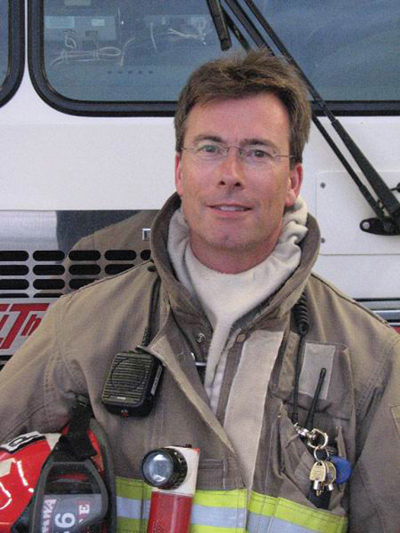
Features
Hot topics
Opinion
Fire IQ
Since fires always go out, and since we usually don’t injure or kill firefighters in the process, we often walk away from those fires believing that things generally went well. But did they really? And are we doing everything in our power to ensure a culture that supports firefighter safety and survival?
March 27, 2009
By Peter Hunt
 |
|
Since fires always go out, and since we usually don’t injure or kill firefighters in the process, we often walk away from those fires believing that things generally went well. But did they really? And are we doing everything in our power to ensure a culture that supports firefighter safety and survival?
Fire fighting is a risky profession. Although we all accept these risks, we often use them to excuse behaviours that expose firefighters to dangers that would not be permitted anywhere else.
The following factors, when applied consistently, will help to establish this culture and go a long way to ensuring the safety and survival of our members.
Policies and procedures
Most standard operating procedures, policies and unwritten rules have existed for generations. Many post-incident analyses identify a breakdown in command, communications, tactics and accountability in contributing to firefighter injuries and deaths. These key elements of incident scene management must be reviewed regularly to ensure that they reflect contemporary standards and regulations in your jurisdiction as well as current technologies and lessons learned from the fire service community.
Training
The best policies and procedures are useless without consistent and continuous training. The fact that a policy or procedure is written down does not ensure compliance at the company level in the field.
Most departments are dealing with shrinking budgets and training is often the first to suffer. Chiefs must demonstrate a willingness to devote the necessary time and expense required to achieve job-wide delivery of programs, and support a strong relationship between training and company officers.
An important part of any training policy is a comprehensive pre-planning program. Beginning with those that present the greatest risk, buildings should be checked, strategy and tactics developed, information logged and made available to all members. Such a program will help ensure job-wide knowledge of existing risks and consistent fire fighting practices. Remember, the best idea, program, policy or procedure will die a slow death without consistent training, enforcement and leadership.
Execution
With policies in place and thorough training to back it up, all that remains is to take it to the street. A systemic problem in today’s fire service is the fact that there aren’t enough fires to ensure adequate experience in all aspects of fire fighting. One of the most contemporary issues is the clash of deeply entrenched fire-fighting tactics (aggressive interior fire fighting) with modern building construction (light-weight components). In the absence of experience, all members must share the responsibility of safely executing tactical policies and procedures, and incident commanders must diligently enforce safe practices.
We are in the midst of a cultural shift that must remove firefighters from lightweight structures in the absence of life hazards. It’s always worth repeating that no building (especially a lightweight building that will be torn down anyway) is worth the injury or death of a firefighter.
Personal protective equipment
Two years ago, a friend and colleague survived pre-flashover fire conditions with temperatures approaching 1,100 F, followed by a three-storey fall when he and his crew were forced to bail out of a window. In addition to being the toughest firefighters I know, their lives were saved because they did everything right when they donned their PPE that day. An analysis revealed that their bunker gear, SCBA, flash hoods, gloves and helmets worked as intended to prevent further injuries. Unfortunately, the best equipment in the world will not help if it’s in your pocket (flash hood/gloves), not properly strapped on (SCBA), not buckled up (bunker gear) or not strapped to your chin (helmet).
Take a look around your department and observe how many of these critical factors are violated. Someone has to be the bad guy and insist that this stuff gets worn!
Another common violation of PPE use is the premature removal of SCBA during post-fire overhaul and salvage. By now, everyone is aware of the presence of hydrogen cyanide in the aftermath of a fire. Although air-quality monitoring is essential, it’s not necessary to remind us to stay on air immediately following extinguishment.
Reinforcement
Fire fighting is a great profession but sometimes the camaraderie inhibits the honesty we require to establish a culture that ensures compliance. One of the best methods for providing positive feedback and reinforcement of desired behaviours is the post-incident analysis (PIA). A good PIA, in which lessons are learned and safe practices reinforced without blame or ill feelings, is not easy to accomplish. The PIA should also complement the incident being discussed. The more serious the incident, the more comprehensive the PIA. A written policy ensures consistency and objectivity and that all relevant issues are discussed openly. Don’t ignore the difficult issues; doing so could perpetuate unsafe practices.
There is no greater obligation in the fire service than to ensure the safety and survival of our firefighters. We must constantly work to create and maintain a culture that supports progressive policies, comprehensive training, strong incident scene management, inspired leadership and constant reinforcement of the safest possible fire-ground procedures.
Note: Thanks to Ottawa Fire Services safety officer Steve Brabazon for his assistance with this column.
Peter Hunt, a 29-year veteran of the fire service is a captain in the Ottawa Fire Department’s suppression division. He can be reached at peter.hunt@rogers.com
Print this page